Nestled in the heart of the Indian Ocean, a cluster of volcanic islands forming the Union of Comoros is known for its mesmerising tropical beauty. The essay provides a comprehensive travel guide to these enchanting islands, which though petite in size, offer vibrant cultural experiences characterised by a fusion of Arab, African and French influences, and a history punctuated by recurrent political strife. A diverse terrain endows this archipelago with a compelling allure, while colourful marine life and pristine beaches beckon travellers keen on a tranquil beauty that’s unhurried and transformative.
Geography and Climate of Comoros
Archipelago in the Indian Ocean
Comoros, also known as the Union of the Comoros, is a picturesque archipelago floating in the warm Indian Ocean waters off Africa’s eastern coast, nestled neatly between the northern tip of Madagascar and the African mainland. The chain comprises four major islands, from west to east, Grande Comore (Ngazidja), Moheli (Mwali), Anjouan (Ndzwani), and Mayotte (Maore). Mayotte, however, remains a French territory, marking a distinctive facet of Comoros’s geography. Sprinkling of smaller islands and islets also pepper the surrounding oceanic canvas, adding to the charm of the Comoros ensemble.
The Lay of the Land
The Comoros Islands unveil a visual treat of poetic landscapes, dominated by lush tropical rainforests, waving palm trees, and contrasting volcanic peaks that etch their silhouette against the skyline. Grande Comore, the largest island, is home to Mount Karthala, an active volcano and the country’s highest point, reaching almost 2,361 meters. The west of the island is less mountainous with predominantly low and undulating hills. In contrast, the eastern coast drops steeply into the ocean, unfurling a startling panorama of towering cliffs, making it a noteworthy feature for visitors.
Agile Topography and Biodiversity
Each island of the Comorian cluster unfolds its unique style of topography, sculpted by nature’s craft. The interiors of the islands generate a rich palette of green, enveloped by tropical rainforest, home to myriads of species, some being endemic. From flying foxes to the Livingstone’s fruit bat, Comoros shelter a dazzling spectrum of fauna. The coasts teem with textured coral reefs and a wide array of marine life, making them a paradise for snorkelling and diving enthusiasts.
Tropical Maritime Climate
Comoros, due to its equatorial location, experiences a tropical maritime climate. It receives an annual average rainfall between 1,000 and 2,000 millimetres and boasts a high humidity rate. The temperature in Comoros typically oscillates between a pleasant 23°C to a warm 31°C throughout the year, laced with the cooling embrace of sea breezes. March through May is known to register elevated temperatures.
Precipitation Patterns
The rainfall trend in Comoros exhibits a well-defined pattern coloured with two distinct seasons – the hot, wet season extends from November to April, accompanied by monsoonal rains, especially from December to April. The cool, dry season runs from May to October, punctuated by shorter rain spells and lesser humidity. Visitors intending to explore Comoros’s vibrant landscapes and soak in its cultural richness may find the dry season more suitable for their travel plans.
Cyclones: A Key Feature of the Comorian Climate
Cyclones are a staple of the weather cycle in Comoros, commonly making their mark between January and April, and sporadically extending further into May. Consequently, anyone considering travel during these months should stay alert to potential cyclone forecasts and adjust their travel plans as necessary. Notwithstanding these weather fluctuations, the stunning tropical allure of Comoros is consistently on display, enticing all who venture to this golden archipelago.
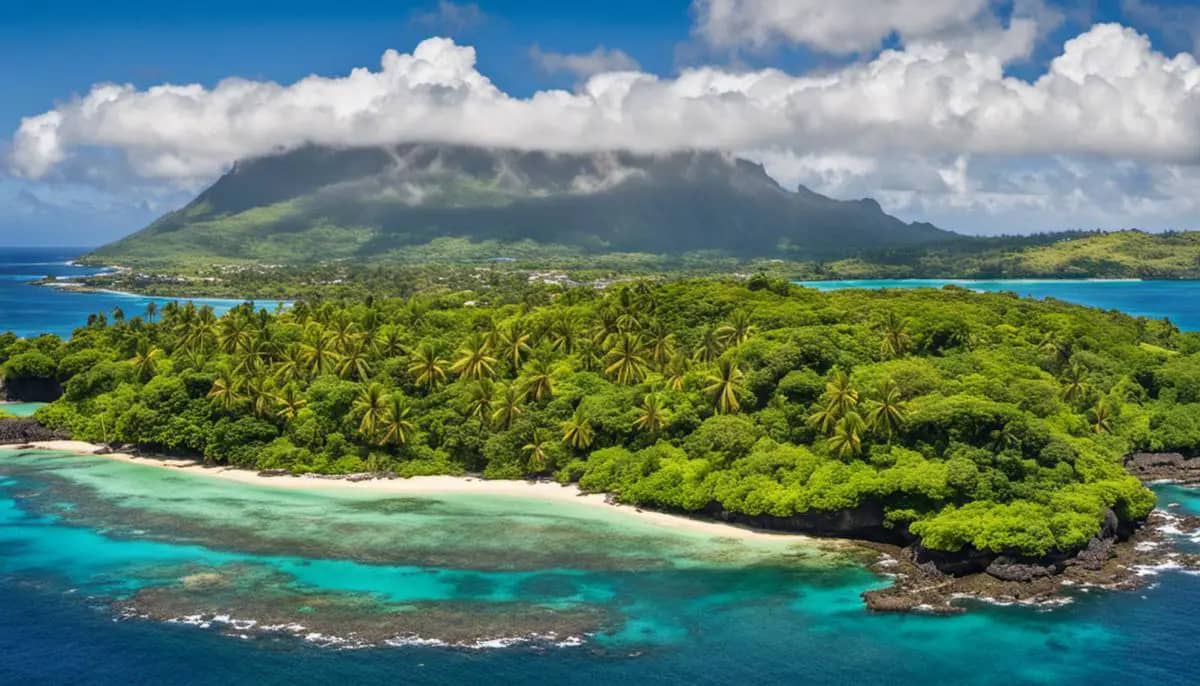
History and Culture of Comoros
A Journey into the Past
Prepare to be subsumed by the deep-rooted history and intriguing culture that permeates the Comoros. Encompassing three principal islands – Grande Comore, Moheli, and Anjouan – this archipelagic nation showcases a vibrant melding of Swahili and Arabic customs. This unique fusion is thanks to its advantageous position along the east coast of Africa.
COLONIAL INFLUENCE
The history of the Comoros is marked by a succession of outsiders eager to benefit from its location and resources. From the 11th century, waves of Bantu-speaking immigrants began to arrive from the African mainland. By the 15th century, the islands were well-known to traders in the Indian Ocean region.
Portuguese explorers were among the first Europeans to arrive. However, it was the French who eventually colonised the Comoros, starting with Mayotte in 1841 and later including the other islands. The Comoros remained a French territory for over a century, until 1975, when the islands, apart from Mayotte, gained independence.
THE FIGHT FOR INDEPENDENCE
The journey towards independence was not an easy one for the Comoros. In the years leading up to 1975, there was a growing desire for self-governance. However, the path was marked by political instability, with several coups following the initial declaration of independence. Despite these challenges, the country persevered on its path towards autonomy.
CONTEMPORARY COMOROS
Today, Comoros is an Islamic Federal Republic, and the political climate is gradually stabilising. Despite facing economic challenges, the Comorian government is striving to improve living standards and infrastructure, steering the nation towards a brighter future.
TRADITIONAL CULTURE AND LANGUAGES
Comorian culture is a melting pot of Swahili, Persian, and Arab influences, vividly reflected in the traditional music, dance, and crafts. The local language, Comorian or “Shikomor,” is spoken alongside French and Arabic, presenting an intriguing linguistic puzzle for visitors to unravel.
MUSIC, DANCE AND ART
Comorian music and dance play a significant role in the cultural life of the islands. The popular ‘twarab’ music style, a blend of Arabic, Indian and Western influences, creates a rhythmic backdrop to local celebrations. Dance forms such as ‘m’godro’ play an integral part in cultural festivals. The island’s craft heritage is equally strong, with artisans specialising in wood carving, embroidery, and basket weaving.
LOCAL CUSTOMS
Comoros is predominantly Muslim, and Islamic customs play a key role in daily life. The local cuisine is a feast for the senses, with dishes that blend African, Arabic, and French influences, with seafood playing a starring role.
Diving into the Depths of Comoros Culture
Prepare to journey along the intricate paths of time to explore the rich history and culture of the Comoros. Be it immersion into past societies including ancient traders and colonial settlers, or the quest to unearth the dynamic culture, Comoros invites you to a vivid tapestry of customs and traditions that continue to be shaped by now and then. The nation caters not only to the history buffs and culture enthusiasts but also to inquisitive explorers yearning for a distinctive, memorable travel experience.
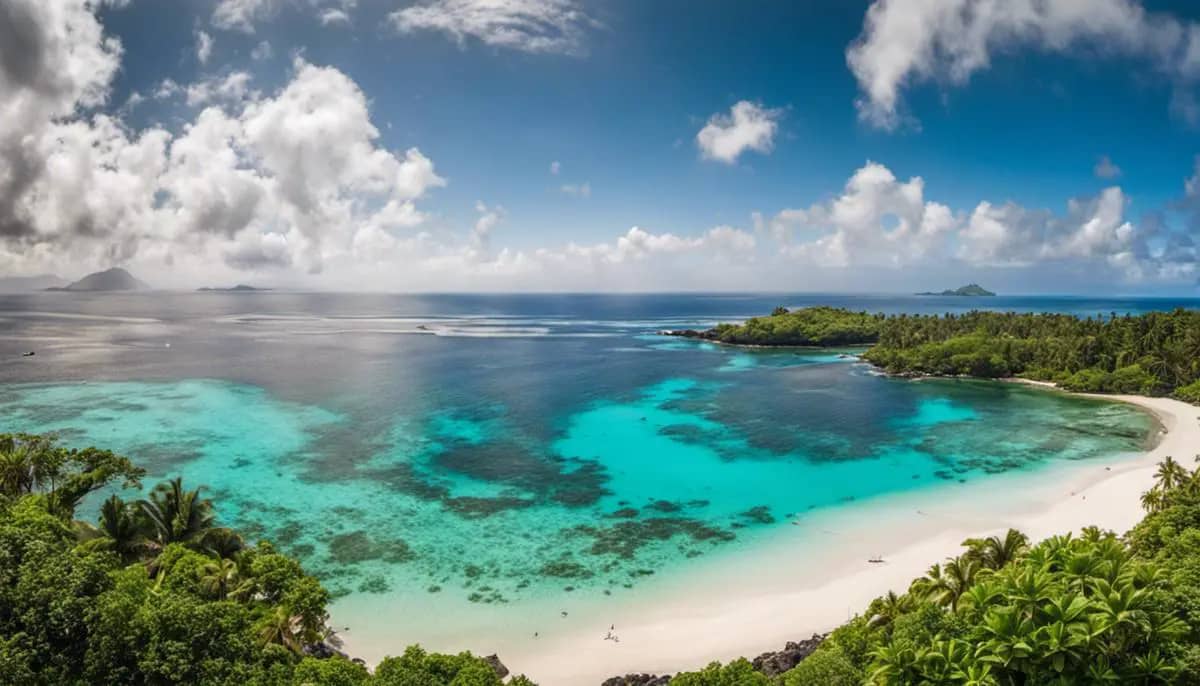
Travel Information for Comoros
Necessary Travel Documentation for Visiting Comoros
Prior to your Comorian adventure, ensuring that you hold requisite travel documents is of paramount importance. This includes a passport that remains valid for an additional six months beyond the length of your stay on the islands. Additionally, Comoros conveniently permits the acquisition of a visa upon arrival at the airport, which remains valid for a duration of up to 45 days, streamlining your travel planning process considerably.
Currency in Comoros
The official currency in Comoros is the Comorian Franc. While credit cards are not widely accepted, cash is the most common form of payment for goods and services. ATMs are somewhat scarce and often unreliable, making it crucial to have enough cash on hand, preferably in the local currency. Any foreign currency should be exchanged upon arrival at the airport or at a local bank.
Transportation in Comoros
Comoros offers various modes of transportation. However, only a limited network of paved roads exists in Comoros, the rest being dirt roads of variable conditions. Some popular means include taxis, rental cars, buses, and domestic flights between the islands. The boats too are a common mode for inter-island travel.
Safety in Comoros
Comoros is generally safe for tourists. However, it is advised to exercise standard precautions such as not carrying large amounts of cash or flashy jewellery, and avoiding isolated areas after dark. In particular, political rallies and large public gatherings should be avoided as they can sometimes turn violent.
Connectivity in Comoros
Wi-Fi can be found in some hotels and restaurants, however the internet connectivity in Comoros is generally poor and unreliable. Prepaid SIM cards are available for purchase on arrival at the airport which offer local call and data options, though coverage may be patchy in remote areas.
Medical Facilities in Comoros
Medical facilities in Comoros are limited, and medical emergencies will likely require medical evacuation to Mayotte, Reunion or South Africa. It is strongly recommended to have robust comprehensive travel health insurance and funds to cover the cost of any medical treatment abroad and repatriation.
Understanding Local Etiquette in Comoros
Comorian culture is deeply entwined with the principles of Islam, which heavily influence local etiquette. This is most notably observed in their dress code, especially in public spaces, where modesty is respected. Covering your knees and shoulders is an unwritten rule, particularly for women. Moreover, it is considered courteous to seek permission before capturing photographs of locals or their property. By abiding by these local customs and traditions, you demonstrate respect for the local culture and sensitivities.
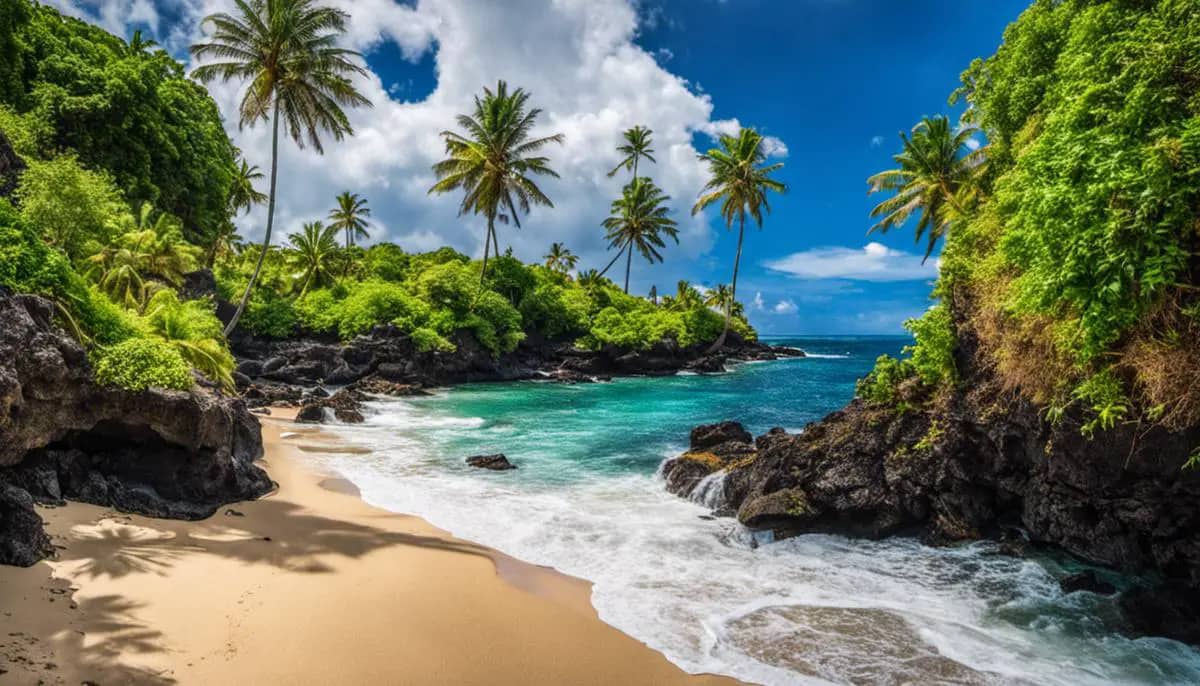
Best Places to Visit in Comoros
Discovering Grand Comore: The Crown Jewel of Comoros
Grand Comore, the largest island in the Comoros archipelago, is well-known for its magnificent active volcano, Mount Karthala. Towering at an awe-inspiring 2,361 metres, the view from its summit is a spectacle not to be missed by visitors. The drama of the volcano’s caldera is undeniably one of the island’s most remarkable natural attractions. For those who enjoy thrill and adventure, a guided tour up the volcano comes highly recommended.
Away from the adrenaline rush of volcanic treks, Grand Comore offers tranquil escapes on its beautiful beaches. Chomoni, Bouni and Mvouni are particularly popular, drawing visitors with their wide stretches of soft white sand and crystal-clear turquoise waters. The rich biodiversity underwater further enhances the charm of these locations, making them perfect spots for snorkelling or diving.
Mohéli: Unspoiled Paradise
Noted for its unspoiled beauty and lush greenery, Mohéli is the smallest of the Comoros Islands. It’s home to Mohéli Marine Park, Comoros’s first national park, featuring breathtaking marine biodiversity. The park is acclaimed for the opportunity it provides to sight rare species like the coelacanth fish, green turtles, and humpback whales.
The town of Nioumachoi on Mohéli serves tourists with local cuisines that range from fresh seafood dishes to sweet tropical fruits. Take a leisurely stroll through the town’s markets that provide a rich immersion into the local lifestyle.
Anjouan: Land of Perfumes
Anjouan is often referred to as the ‘Land of Perfumes’ due to its abundance of ylang-ylang, jasmine, and other fragrant flowers used in the perfume industry. The island is marked by dramatic landscapes, from rugged mountains to terraced plantations and waterfalls.
The ancient medina in Mutsamudu, the island’s capital, is amongst its main attractions. An excursion to the medina offers a chance to admire the impressive architecture of the citadel, the Sultan’s Palace, and a fascinating labyrinth of winding streets and alleyways.
Off the Beaten Path: Nkazidja Island
Nkazidja, also known as Ngazidja, offers numerous off-the-beaten-path attractions. The island is fringed with deserted beaches, providing a perfect retreat to unwind in nature’s lap. Nkazidja’s hills are a trekkers delight, presenting challenging trails, and the old Arab plantations offer unique insights into the island’s past.
Comoros Cuisine
No visit to the Comoros Islands is complete without indulging in local cuisine. The food here is a delectable mix of African, Arab, and French influences. Some local dishes to try include langouste a la vanille, a tantalising lobster dish flavoured with vanilla, and mataba, cassava leaves stuffed with meat or fish. Don’t miss out on the chance to sip locally made drinks like bourbon pointu, or Comorian coffee.
As a gateway into an enchanting blend of stunning natural attractions, historical richness and intriguing culture, the Comoros islands are an undiscovered gem waiting to be explored. Regardless of whether you’re an adventurer yearning for the thrill of traversing volcanic terrains, a marine life enthusiast eager to delve beneath the waves, a foodie keen on local flavours, or simply a peace-seeker in search of serene beaches, Comoros offers an enriching experience to all who venture here.
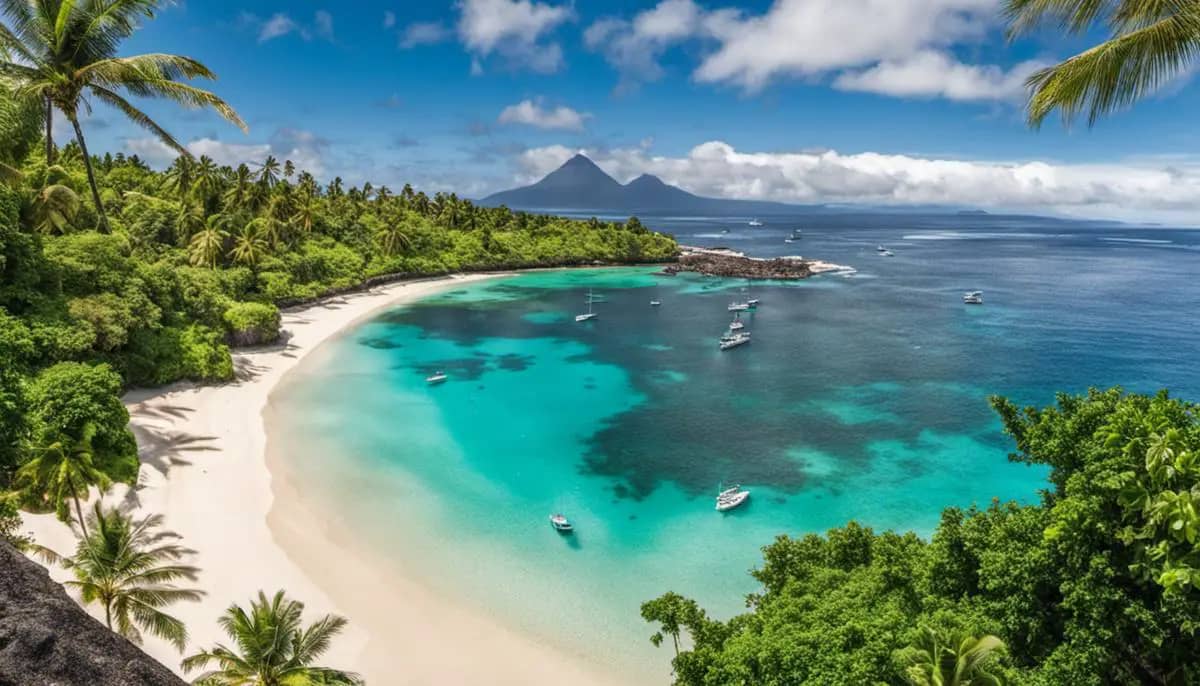
Comoran Food and Local Delicacies
An Excursion into Comoran Cuisine: A Fusion of Flavours
Dive into the culinary delights of the Comoros, an idyllic chain of islands off the east coast of Africa, boasting a gastronomy that’s an intriguing melange of African, Arabic, and French influences. Staple elements of the Comoran gastronomy are rice and meat, complemented by an abundance of tropical fruits, vegetables, and a diverse array of seafood freshly procured from the bountiful Indian Ocean.
Topping the list of Comoran dishes that you shouldn’t miss is Langouste a la Vanille. This distinctive dish showcases lobster bathed in a local vanilla-infused sauce that’s a medley of butter, cream and wine. Despite the seemingly unusual pairing, the harmonious interplay of sweetness and savouriness, crowned by the prime texture of the lobster, results in an unparalleled taste experience.
Besides, vanilla seasoned meat or fish is another crowd favourite. Comoros is among the world’s premier vanilla producers, and while vanilla is typically linked to sweet dishes, Comoran culinary tradition frequently incorporates it into savoury preparations. This imparts a subtly sweet, floral undertone that enlivens the flavour of the meat or fish.
Stepping into the Street Food Culture
For a real bite of Comoran culture, try the local street food. Samosas are a common snack found at street food stalls throughout the islands. These little pastries are stuffed with highly seasoned meat or vegetables, and are deep fried for a crispy finish.
Don’t miss Mkatra Foutra, a pancake-like dessert made with coconut milk, rice and eggs, flavoured with cardamom and vanilla. Dusting of sugar on top gives the final touch to this sweet, slightly dense and spongy snack, that’s best enjoyed with a beverage like the locally popular spiced chai.
Drinks to Quench the Tropical Thirst
With a tropical climate, staying hydrated in Comoros is critical. Luckily, it has a variety of local drinks to help. Fresh coconut water is readily available – it’s refreshing and full of natural electrolytes that can help stave off dehydration. For alcohol drinkers, there’s a Comoran rum made from local sugar cane and flavoured with the ubiquitous vanilla.
Where to Savour the Delights
In the capital city of Moroni, Karthala Restaurant offers high quality Comoran cuisine in a relaxed setting. At night, the beach shacks operating along the coastline serve up a variety of fresh seafood dishes, and in the markets of Moroni and Mutsamudu, you’ll find vendors selling Comoran street food.
The Comoros may be small and often overlooked as a tourist destination, but for those who find their way to these islands, a culinary adventure awaits. The blend of African, Arabic, and French influences combined with the use of local ingredients, particularly the vanilla, offers an unexpected and delightful culinary experience.
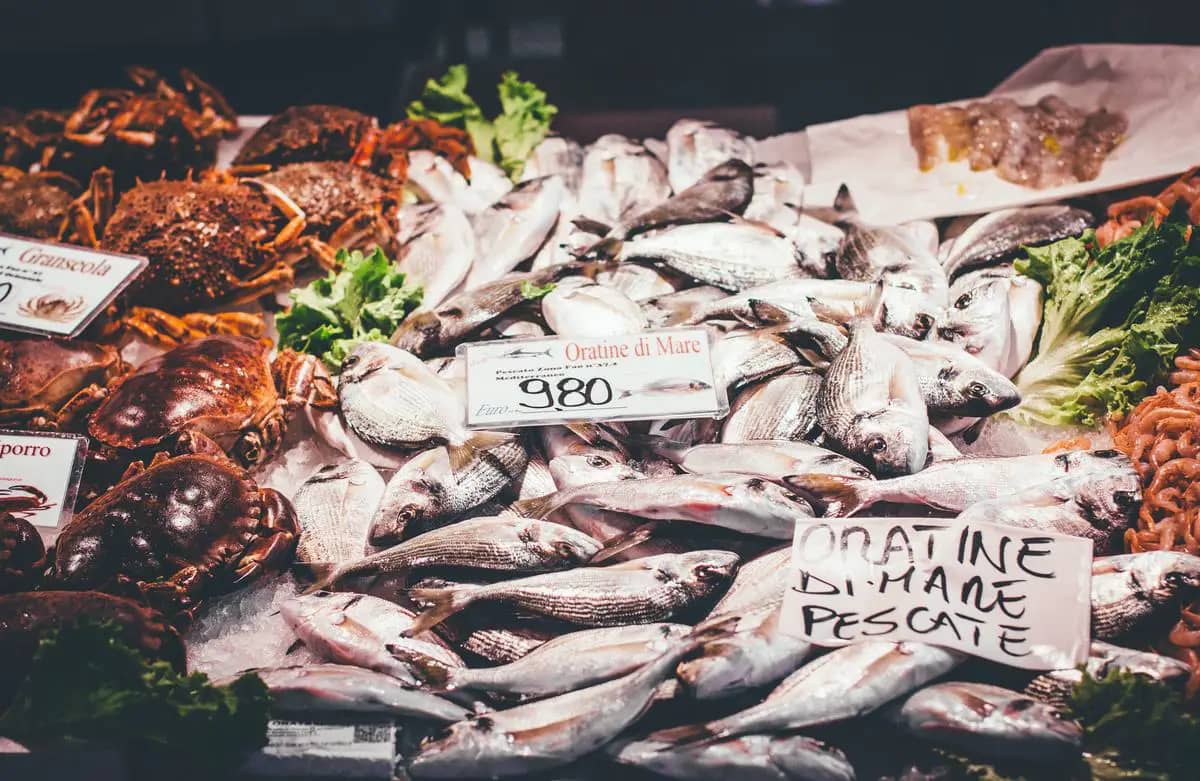
Photo by eugenezhyvchik on Unsplash
As adventurers transect through Comoros, they discover a nation facing the future whilst embracing a rustic charm. Despite the allure of sandy beaches and lush landscapes, the spiritual heart of Comoros pulsates in the bustling local markets which banquet a sensorium of sights, sounds and smells. The compelling blend of French and Swahili influences, the flavours of seafood-rich cuisine echoing in the air, the engaging music and dance traditions – all constitute a vivid tableau of a culture that’s strikingly distinct and inviting. Travelling through Comoros is not just a voyage across islands tucked in the Indian Ocean; it’s a voyage into the heart of a resilient culture and a people who honour their past while steadily stepping into the future.

